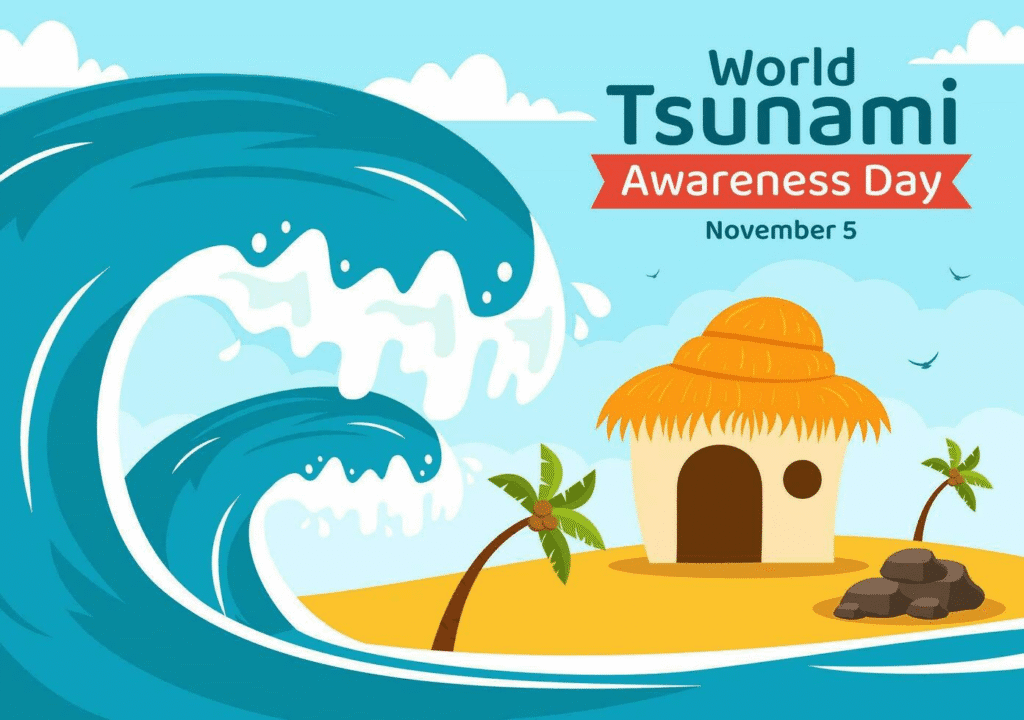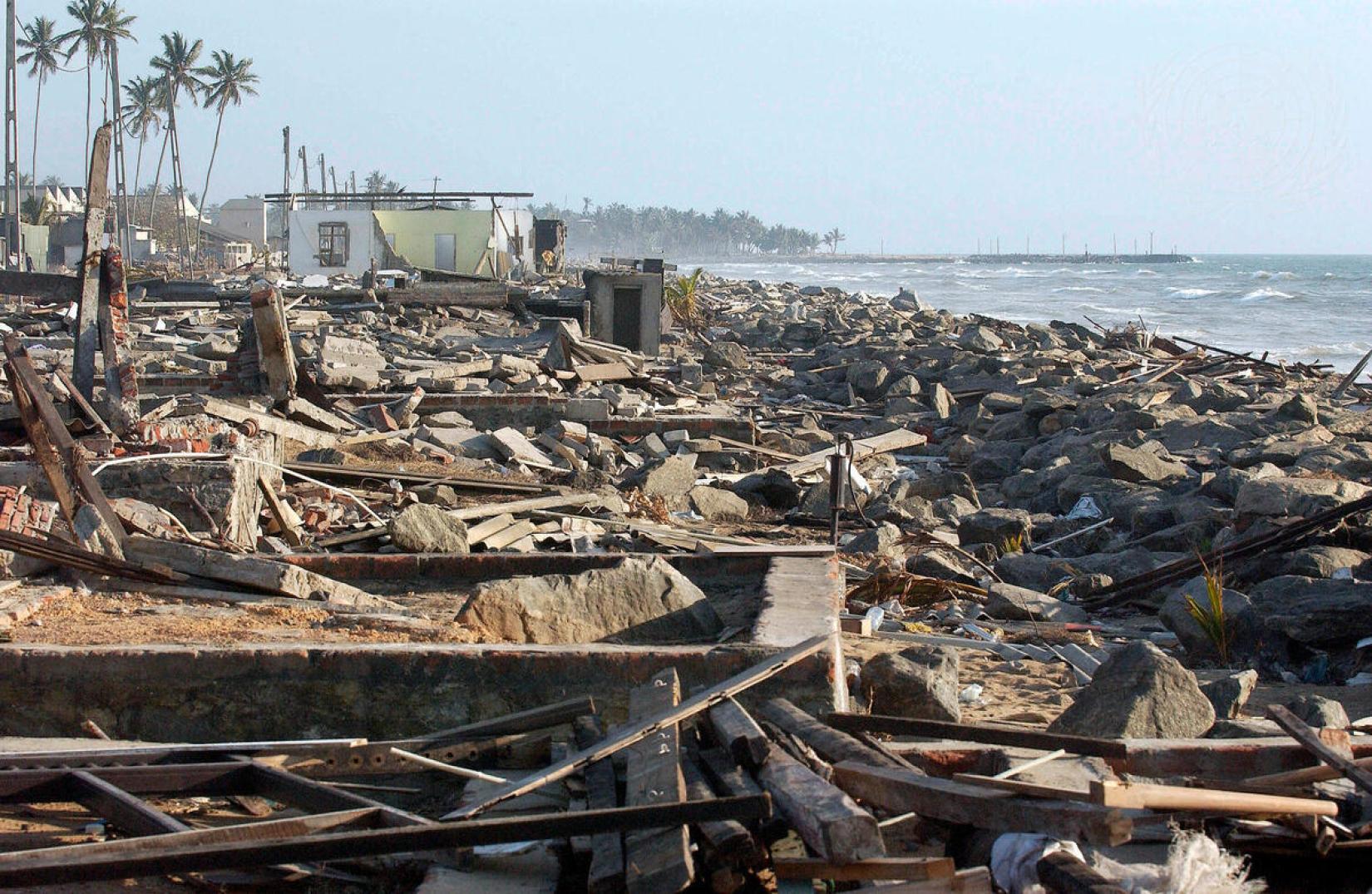Written By: Rtr. Isuri Dewmini
Happy World Tsunami Awareness Day!
Today, November 5th, is more than just a date on the calendar; it’s a global call to action, a moment to reflect on the power of nature, and a reminder that preparedness can save countless lives.
The Purpose and Significance of November 5th
The choice of November 5th is highly symbolic and intentionally forward-looking.
- UN Mandate: The day was established by the UN General Assembly in 2015, following a proposal from Japan—a nation with deep historical experience and expertise in tsunami disasters.
- A “Forward-Looking” Date: Rather than commemorating a day of tragedy (like the devastating 2004 Indian Ocean Tsunami on December 26th), November 5th was selected because it is associated with a heroic and proactive act that saved lives.
- Goal: The fundamental purpose is to boost global efforts to strengthen tsunami preparedness and share innovative risk-reduction approaches, aligning with the targets of the Sendai Framework for Disaster Risk Reduction (2015-2030).
This date serves as an international reminder that while tsunamis cannot be prevented, their impact can be mitigated through knowledge and decisive action.
The Spark of “Inamura-no-hi”: A Story of Sacrifice and Foresight
The date harks back to the inspiring Japanese legend of “Inamura-no-hi”, meaning “the burning of the rice sheaves.”
In 1854, after a powerful earthquake, a wise farmer named Hamaguchi Goryo observed the receding tide, a telltale sign of an approaching tsunami. With no time for verbal warnings, he made an agonizing decision: he set fire to his precious harvested rice sheaves, his family’s livelihood. The villagers, seeing the smoke, rushed to the high ground to help him, only to witness the colossal tsunami wash over their homes below. His selfless act saved an entire village.
This poignant tale underscores the core message of World Tsunami Awareness Day: traditional knowledge, quick thinking, and community action are paramount.

“Be Tsunami Ready: Invest in Tsunami Preparedness” – Our Global Imperative
This year’s theme, “Be Tsunami Ready: Invest in Tsunami Preparedness,” echoes Hamaguchi Goryo’s wisdom. It’s a powerful call to move beyond mere awareness and to actively build robust systems and knowledgeable communities.
Investing in preparedness means:
- Robust Early Warning Systems: Ensuring that warnings reach everyone, everywhere, in time.
- Clear Evacuation Plans: Mapping safe routes and high grounds.
- Continuous Education: Teaching communities what to do before, during, and after a tsunami.
These investments are not expenses; they are vital safeguards for life and livelihood.
Sri Lanka’s Enduring Scar: Lessons from the 2004 Indian Ocean Tsunami
Few countries felt the power of the ocean more acutely than Sri Lanka, forever etched in memory by the 2004 Indian Ocean Tsunami. This catastrophic event, triggered by a massive undersea earthquake, claimed over 35,000 lives in Sri Lanka alone, displacing hundreds of thousands and exposing critical gaps in global and local warning systems.
The tragedy served as a brutal catalyst, driving a regional commitment to build comprehensive Tsunami Early Warning Systems across the Indian Ocean.



From Tragedy to Resilience: Sri Lanka’s Tsunami Ready Journey
Since the 2004 Indian Ocean tsunami, Sri Lanka has steadily shifted from reactive disaster response to proactive resilience. Today, it plays a key role in the Indian Ocean Tsunami Early Warning and Mitigation System, with its national protocols successfully activated during the 2025 Kamchatka earthquake—demonstrating real-time coordination and preparedness.
Led by the Disaster Management Centre (DMC), Sri Lanka continues to implement the UNESCO/IOC Tsunami Ready Programme at the community level. Coastal areas conduct annual drills, develop evacuation plans, and maintain warning towers and sirens to ensure rapid response in case of a threat.
However, not all communities have achieved full Tsunami Ready certification. To strengthen its preparedness, Sri Lanka must expand coverage to more vulnerable zones, improve maintenance of warning infrastructure, and ensure that disaster education reaches schools and marginalized groups. Better coordination between national agencies and local governments will also be key to building truly inclusive resilience.
Sri Lanka’s journey reflects a powerful transformation—from tragedy to a nation committed to safeguarding its coastal communities through awareness, infrastructure, and collaboration.
Join the Movement!
World Tsunami Awareness Day is a testament to the power of knowledge and collective action. Whether you live near a coast or simply want to understand global hazards, take a moment today to learn your local evacuation routes and what the natural warning signs of a tsunami are.

Share this knowledge, support initiatives like the UNESCO Tsunami Ready Programme, and let’s work together to ensure that communities worldwide are truly “Tsunami Ready.”
Graphic Design by: Rtr. Buthma Menali


0 Comments